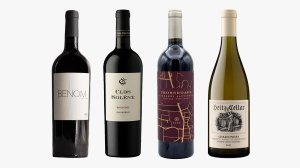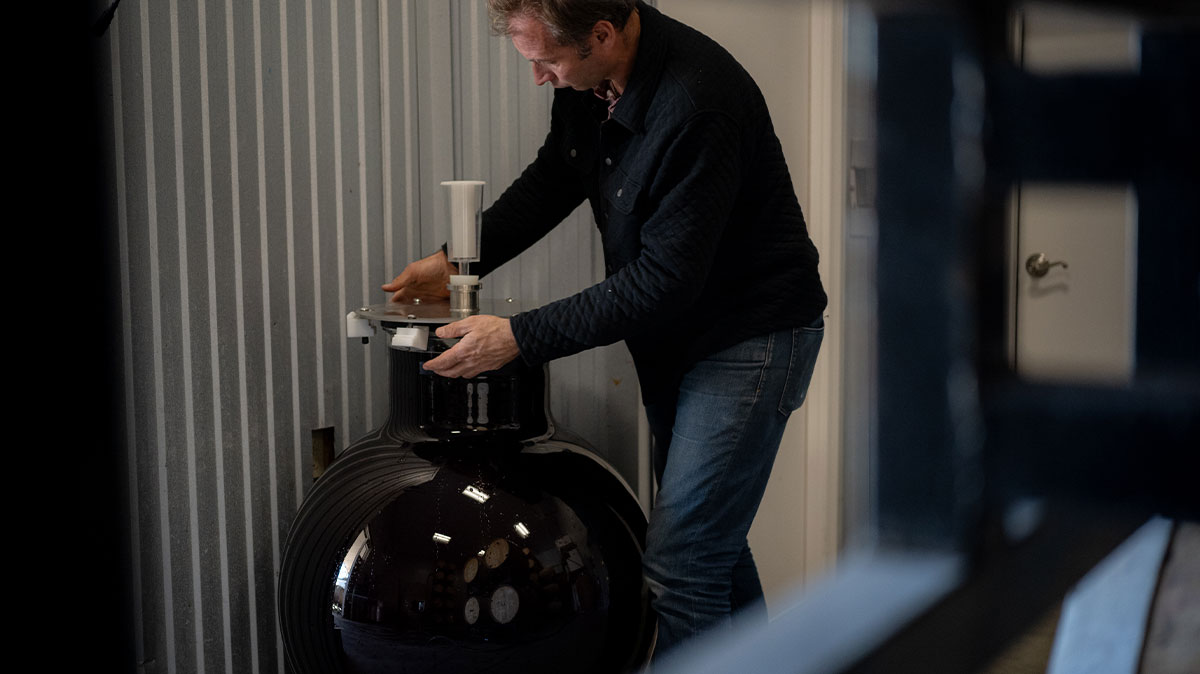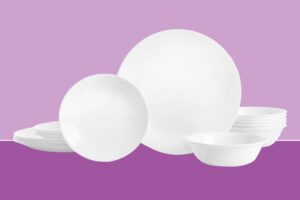This story is from an installment of The , our weekly insider newsletter to the world of fine wine.
Although wine is often considered to be stuffy and tradition bound, it seems there is always something new in the vineyard or winery. Oak barrels from were only introduced to Napa Valley around 50 years ago, and in the years since, we’ve heard a lot about alternative vessels like amphora and concrete eggs. The latest tool used by winemakers to show off the pure terroir of their grapes is the Wineglobe, a 100 percent glass orb to vinify and age wine. Introduced in 2015 by the Paetzold family in Bordeaux, Wineglobes are used today by around 500 wineries around the world, including about 20 in the United States. These vessels are ideal for vinifying small lots of white and rosé wine and for aging red without any introduction of oxygen into the winemaking process—all while allowing constant movement of the liquid. Unlike other materials used for winemaking such as wood, cement, terra-cotta, and ceramic, glass is completely non-porous, so when the globes are fully sealed, no air exchange takes place. In addition, because of the elimination of “headspace,” no topping off is required and sulfur dioxide can be significantly reduced.
Many of those who are using this unique vessel in the United States learned about it by word of mouth, such as winemaker Guillaume Fabre, who co-owns a pair of wineries, Clos Solène and Benom. Guillaume’s brother Nicholas, a winemaker in , had begun trials with the Wineglobes, so after a trip to Nicholas’s winery and a visit to the Paetzold’s Wineglobe production facility, Guillame became interested in how he could incorporate the technology, too. So far, he has not made a 100 percent globe-fermented and aged wine, preferring to use them to ferment small amounts of white wine for his white Rhône-style Clos Solène Hommage Blanc and aging a small portion of Châteauneuf-du-Pape–style, Grenache-based Clos Solène Harmonie. “Because the globe doesn’t allow any oxygen to reach the wine, it helps keep a fresher fruit profile,” he says. “It’s like taking a fresh fruit you’ve just cut and keeping it just as fresh smelling and tasting for 12 months.”
Sam Dhiman, assistant winemaker at Napa Valley’s , learned about the globes directly from the sales team at Bouchard Cooperages, a family-owned barrel-making business in Burgundy that now sells Wineglobes in America. While the single-piece globes come in a variety of sizes ranging from 25 to 400 liters, Dhiman, like Fabre, uses the popular 220-liter size (around 60 gallons), which is just slightly smaller than a standard barrel. At Heitz, wine in the globes makes up part of the blend in Quartz Creek Chardonnay and Lot C-91 Sauvignon Blanc. Dhiman uses it as a tool to increase complexity. “For our white wines, it brings an intense freshness and purity of fruit that complements oak-aged portions,” he says. “Our white wines aged in oak tend to show more roundness and aromatic complexity. In globes these wines tend to show brighter fruit and a distinct lees impact.” Heitz Cellars is also working with the vessels in an experimental Port-style wine that is not yet available for sale; Dhiman says it has gained a sense of depth without trending too far towards oxidation.

A selection of bottles made in Wineglobes.
Several of Heitz Cellars’s Napa Valley neighbors are working with the globes, including Eisele Vineyard, Boisset Collection, Stony Hill Vineyard, and , where winemaker Natalie Bath began using them in 2021. A portion of her Crossroads Sauvignon Blanc and Crossroads Cabernet Sauvignon are vinified that way, which Bath explains is because she often tries new and innovative practices with this tier. She points out that Rudd Estate brought over concrete eggs from France in 2004 and Italian amphorae in 2015, and that they have trialed oak from a variety of cooperages and experimented with American and Austrian oak in multiple sizes.
“Trying out the Wineglobe was a natural progression in evolving the tools we have the option of using during the winemaking process,” she says. The Wineglobes’ neutral nature allows her to focus on fruit tannin (derived from skins and seeds) rather than oak tannin, which enables her to better evaluate the growing and harvesting decisions made in the vineyard.
A literal who’s who of French producers, including Gérard Bertrand, Domaines Ott, Didier Dagueneau, Stéphane Ogier, Château d’Yquem, , Château de Meursault, and Vincent Dancer, are also utilizing the orbs. Véronique Boss-Drouhin—winemaker at Maison in Burgundy and Domaine Drouhin Oregon—bought a single globe after hearing about them from a friend. Boss-Drouhin is working on a single 220-liter batch of Chardonnay that she is considering bottling on its own rather than blending. After keeping it in the globe much longer than she would have in barrel or tank and stirring the lees more than usual, she is impressed with the results. “There is a unique character to what’s in the globe, almost exotic,” she says, adding a single word for emphasis: “Gorgeous.”
Do you want access to rare and outstanding reds from Napa Valley? .
Authors
-
Mike DeSimone and Jeff Jenssen
Mike DeSimone and Jeff Jenssen, also known as the World Wine Guys, are wine, spirits, food, and travel writers, educators, and hosts. They have been featured guests on the Today Show, The Martha…
Credit: robbreport.com







